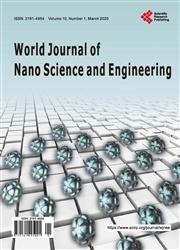Effects of R134a Saturation Temperature on a Shell and Tube Condenser with the Nanofluid Flow in the Tube Using the Thermal Efficiency and Effectiveness Concepts
引用次数: 0
Abstract
The work’s objective is to analyze the influence of the saturation temperature of the R134a refrigerant on the thermal performance of a shell and tube type condenser, with water and aluminum oxide (Al2O3) nanoparticles flowing into the tube. For analysis, the heat exchanger is subdivided into three regions: subcooled liquid, saturated steam, and superheated steam. The shell and tube heat exchanger assumed as the basis for the study has 36 tubes, with rows of 4 tubes in line and three passes into the tube in each region. The parameters used to analyze the performance are efficiency and effectiveness, through variations of quantities such as saturation temperature, the nanofluid’s mass flow rate, fraction in the nanoparticles’ volume, and the number of passes in the tube in each region of the heat exchanger. The obtained results demonstrate that the efficiency is relatively high in all the analyzed situations. In each saturation temperature, the effectiveness can be increased by introducing fractions of nanoparticles in the water or increasing the number of passes in the tube.基于热效率和有效性概念的R134a饱和温度对管内纳米流体流动的壳管式冷凝器的影响
这项工作的目的是分析R134a制冷剂的饱和温度对管壳式冷凝器热性能的影响,其中水和氧化铝(Al2O3)纳米颗粒流入管中。为了进行分析,热交换器被细分为三个区域:过冷液体、饱和蒸汽和过热蒸汽。作为研究基础的管壳式换热器有36根管子,每排4根管子排成一行,每个区域有三个通道进入管子。用于分析性能的参数是效率和有效性,通过饱和温度、纳米流体的质量流速、纳米颗粒体积中的分数以及热交换器每个区域中管道中的通过次数等量的变化。所获得的结果表明,在所有分析的情况下,效率都相对较高。在每个饱和温度下,可以通过在水中引入部分纳米颗粒或增加管中的通过次数来提高效率。
本文章由计算机程序翻译,如有差异,请以英文原文为准。
求助全文
约1分钟内获得全文
求助全文

 求助内容:
求助内容: 应助结果提醒方式:
应助结果提醒方式:


